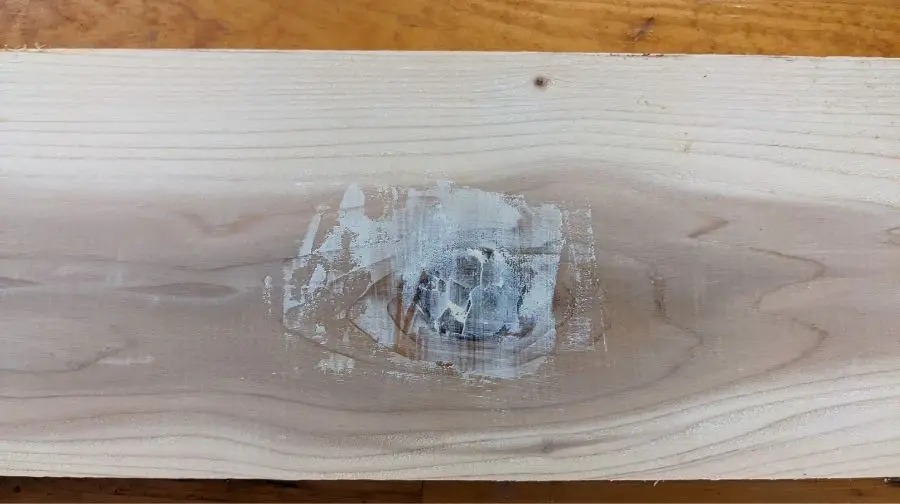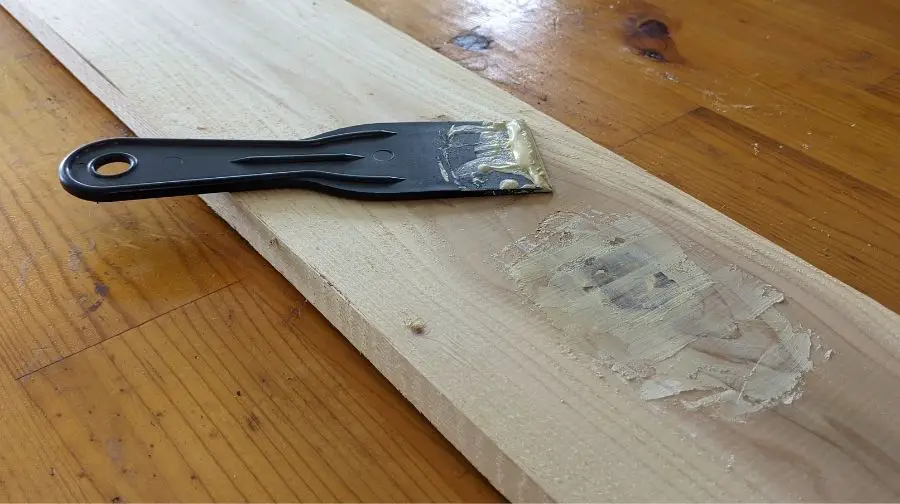
When you are woodworking, there may be times when you need to use wood putty. This is a type of wood filler that is used to fill in small holes or cracks in the wood. It is important to know how to sand wood putty so that you can get a smooth finish on your project. In this blog post, we will discuss the best ways to sand wood putty and achieve the desired results.
Table of Contents
Is Wood Putty Easy To Sand?
Wood putty isn’t easy to sand because it doesn’t fully harden like wood filler does. Typically wood putty is used on finished projects that have already been stained for this reason it is better to match your wood putty color to your stain color prior to applying. If you sand the putty after applying you will be sanding off your stain as well.
If you are filling a large hole, you may want to use a wood filler instead of wood putty. Wood filler is made from wood fibers and resin. It is stronger than wood putty and can be sanded smooth. It is also easy to paint or stain. Wood filler comes in different colors, so you can match it to the color of your wood.
When using wood putty or wood filler, always read the label. Some products are not meant to be sanded. Follow the directions on the label for best results.
What Is Wood Putty And What Are Its Uses?
Wood putty is a type of wood filler. It is used to fill in small holes, cracks, or imperfections in wood. It can also be used to repair wood that has been damaged by water or insects.
Most wood putties are made from a mixture of wood chips and glue. This makes them very easy to sand down once they have been applied to the wood.
Subscribe to The Restorer on YouTube
How To Sand Wood Putty For A Smooth Finish?
Ideally you won’t need to sand wood putty because it should be color matched to your finished project’s stain prior to application and the excess removed after application to your repaired section.
But with the right tools and a little bit of patience, anyone can sand wood putty to create a smooth finish. Here are a few tips on how to sand wood putty for a smooth finish:
– Use fine-grit sandpaper: Sandpaper with a higher grit number will be smoother and less likely to leave behind scratches.
– Use a sanding block: A sanding block will help you apply even pressure while sanding wood putty.
– Be patient: Sanding wood putty can be time consuming, but it’s important to take your time to avoid creating scratches or unevenness in the wood putty.
The Benefits Of Wood Putty
There are several benefits to using wood putty:
- It dries quickly.
- It’s available in different colors.
- It can be used on both finished and unfinished wood.
If you’re looking for an easy way to fill in holes, dents, or scratches in wood, then wood putty is a good option.





